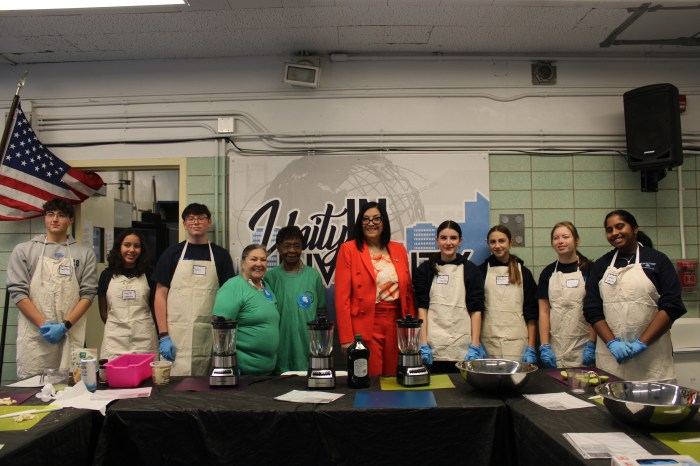Now that spring is here, children and teenagers will start spending more time outdoors running, playing and participating in athletic activities. It’s also the time of year doctors see an increase in foot injuries, according to Dr. John Blanco, a pediatric orthopedic surgeon with offices in Fresh Meadows, Queens and at Hospital for Special Surgery in Manhattan. The culprit is often inappropriate or ill-fitting footwear.
“Parents bring children in for all kinds of foot problems
and injuries, and the first thing I do is ask about their shoes,” said Blanco. “Footwear has a lot to do with how their feet function on a day to day basis, especially during athletic activities.”
Blanco says the best bet is often a lace-up sneaker that fits right and is worn correctly. Velcro sneakers may be easier to fasten than lace-up shoes, but they offer much less support, he notes.
“For sports activities, I recommend a good lace-up sneaker,” he said. “Typically, a cross-trainer style is a good choice because it usually has proper heel support and a good arch built into it.” Blanco recommends that people with any type of foot problem have the length and width of their foot measured in a shoe store. The right fit and proper lacing will provide good support and shock absorption and will cut down on injuries.
“Kids should be encouraged to use all the lace holes,” he says. “Laces should go all the way to the very top hole and should be tied snugly. Properly laced shoes give more stability to the foot.”
But a lot of kids are walking around with loosely-laced sneakers, the preferred style for many young people. Internet message boards devoted to sneakers contain messages attesting to the popularity of the hazardous trend. On Yahoo Answers, the question “How Loose Do You Wear Your Sneakers?” garnered such responses as: “I don’t use laces. They are not needed! Running is hard though,” and this one, chosen as the Best Answer by voters: “I wear mine with either no laces or the laces VERY loose, maybe just the first 2 holes laced, I love the laces hanging loose, and the tongue hanging forwards. On skate sneakers, I cut the elastics that hold the tongue down – I just hate that. Skate sneakers must be LOOSE with the tongues hanging out.”
It may be trendy, but these loose-lace aficionados are running into trouble. “Kids come in all day long with sprains, strains and twisting injuries, and the first thing we find out is they were wearing shoes that were not properly laced or were ill-fitting,” Dr. Blanco says. “Kids playing sports with sneaker laces having all kinds of strange designs and no support will come in with a broken ankle or a foot fracture.”
Nevertheless, loose laces and ill-fitting sneakers are not the only problems. Now that the warm weather is approaching, some of the most hazardous footwear for young people will be back in vogue. Blanco has a list of the worst offenders:
Flip-flops – Wearing flip-flops is almost like going barefoot. While they are fine to wear at the beach or the pool, they are not appropriate for long walks, a trip to the mall, riding on escalators, or any kind of athletic activity. Children with foot problems such as flat feet or frequent ankle sprains should not wear them at all.
Crocs and other soft, pliable shoes – Although appropriate for the beach and poolside, they are not good to wear at the mall or for sports. They are very wide, have no support and are loose-fitting. There have been reports around the country of kids getting this type of shoe stuck in escalators and suffering serious injuries.
Heelies – These sneakers, usually worn by younger children, have a roller ball at the heel. As kids glide on this rolling wheel, they may have trouble stopping. Clearly, they should never be used while trying to cross the street in traffic or on a busy sidewalk.
Skateboard shoes. These wide shoes have super thick laces that are not designed to be laced up. They do not provide good support when walking.
In the spring and summer, good footwear is a particular concern, Blanco added because many teens get summer jobs and are on their feet all day. Prolonged standing can be a problem without a good, supportive, shock-absorbing shoe.
Young people should always have the appropriate footwear for the sport they are playing. Sneakers should be discarded when the sole wears down, the arch support flattens out or the inside gets stretched out. The right time to get a new pair of shoes often depends on a child’s or teen’s activity level.



































